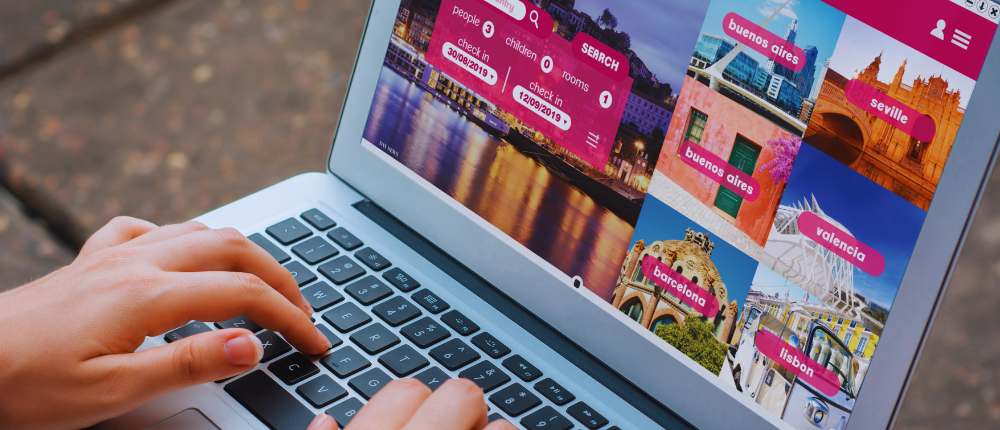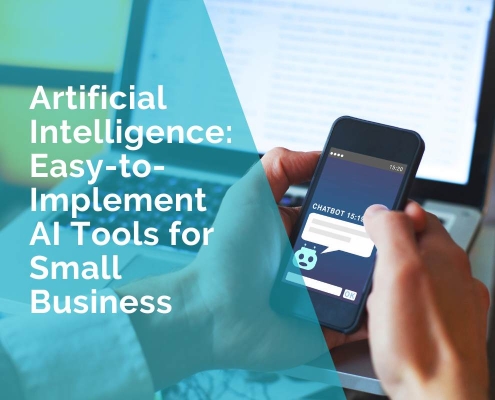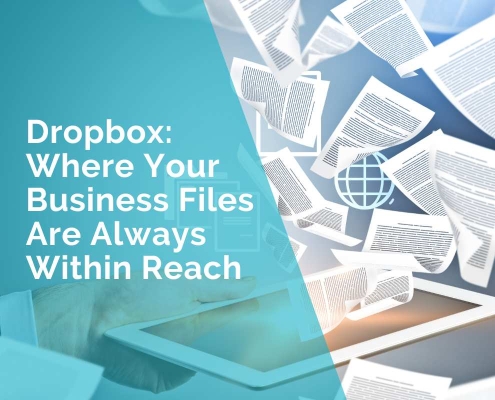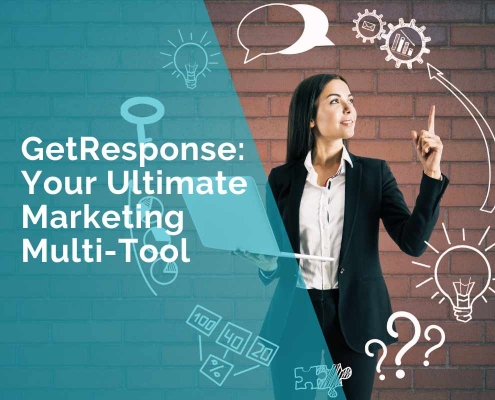25+ Ways to Drive Traffic to Your Website
The age of digital marketing is upon us. The standard methods of marketing are no longer monopolizing the field and have given way to digital methods.
Digital marketing is quite complex; there are numerous ways to go about it, but a few things are mandatory, no matter what your approach is. The most important thing is to have a platform, aka a website.
Without a website, most marketing efforts are a waste because the customer does not have a destination to go to.
A website serves as a digital storefront or office. The more traffic you can drive to it, the better your business will perform. It is not as simple as that in reality, but there is no doubt that more traffic ultimately leads to more sales.
Let’s take a look at some of how you can increase the amount of traffic coming to your website.
Myriad Ways to Increase Website Traffic
These are 25+ tips on increasing website traffic.
1. Advertise Your Brand
To generate traffic to your website, people must know about it and want to visit it.
That’s why you need to create exposure and promote your website. To do that, you can use advertisements. Digital advertisements come in many shapes and forms. Given below are some common types.
- Banner advertisements. These appear in small, unintrusive, longitudinal sections on a webpage.
- Pop-up ads. These appear as a new window on your current webpage.
- Video ads. These appear as videos embedded in a webpage or as a pop-up.
- Search engine ads. These are the sponsored results that show up first in the SERPs (Search Engine Results Pages) for their relevant keywords.
- Native ads. These are ads that appear naturally within your content.
These are just a few types of digital ads that you can use to inform people about your website and encourage them to visit. Each type of ad has its unique benefits.
Strategic placement of ads is your best friend and will help drive more traffic to your website.
2. Engage Your Audience on Social Media
The power of social media cannot be denied. Arguably, the most potent method of increasing your website’s exposure is to use social media.
If you are lucky, you can go viral, and that can instantly expose your brand to a large audience.
There are several ways to engage your audience on social media. First of all you will require a company account or page on the platform.
Then, you can place ads, updates, and other types of content on the platform. The idea is to give people something to interact with.
When people do interact, give them respectful and valuable answers. Like and react to their comments and address any questions they might have.
Don’t try to milk it, though, as it becomes obvious, and many people turn away. Hence, all social media communication should be kept natural.
3. Collaborate with Influencers and Industry Experts
Generating traffic is quite easy if you have friends in high places. Industry experts and influencers who have a lot of reach can help you generate more traffic to your website.
You need to reach out to relevant influencers in your niche and strike a deal with them. They can promote your website to their audience and possibly direct a large amount of traffic.
Valid ways of reaching out to such people include:
- Direct messages on social media
- Emails
- Or indirect methods like making a post/ad that offers some benefits in return for promoting your website
People with a lot of reach have an audience that is more likely to try out anything they endorse. So, using an industry expert to leverage their pull will result in a lot of new traffic to your site.
Of course, all of this assumes that your website and service are good enough for the influencer to endorse it.
4. Use Blog Posts to Generate Traffic
A great way to generate passive traffic (otherwise known as organic traffic) is to create content and post it on your website. Valuable content gets indexed and shows up in the results for its relevant keywords.
This is great for exposure because the better your content is the higher it will show up in the SERPs.
If it appears on the first page, then you can get millions of traffic from it every month. Of course, a lot of work goes into making a website appear on the first page. The various techniques used for it are classified under the banner of SEO (Search Engine Optimization).
We will touch upon SEO later in this article, so don’t worry about that.
5. Invest in Keyword Research
We have mentioned keywords a few times. You might be wondering what they are. Keywords are search terms used by people to look for specific topics on a search engine.
Keywords have different search intents. These include:
- Informational
- Transactional
- Navigational
- Commercial
These are the main four. To get the most traffic, you need to find the keywords that relate to your website. This can be done with the aid of a keyword research tool like Ahrefs, Semrush, Ubersuggest, and Google Analytics.
You need to create content that uses keywords with the most volume and relatively low ranking difficulty. The content must fulfill the search intent of the keyword as well. For example, an informational intent keyword needs content that educates the audience on a particular topic.
A commercial intent keyword requires a digital shop that sells what the keyword specifies. For example, “Buy shoes online” is a keyword with commercial intent. To capture the traffic for this word, you need to create a webpage that sells shoes online.
The better your keyword research will be, the better content you will be able to create and rank higher in the SERPs, thereby getting more traffic to your website.
6. Provide Personalized Content
Another way to get more traffic is to provide personalized content. What is personalized content? It is content that caters to the interests of your audience. People are different from one another, but their broader behaviors and interests can be easily grouped together.
However, this requires extensive audience research. Audience research is a massive undertaking, and it requires either having a substantial amount of visitors to your site or buying user data from a broker.
Audience research includes learning the demographic, gender, approximate geolocation, and other relevant data. This data is used to create audience personas.
If you have a substantial visitor base, you can check user accounts to learn their age and gender. By using the heatmap of their interactions with your site, you can learn their interests. Finally, by tracing the approximate location using IP address geolocation, you can learn their geographical region.
Once you have this data, you can create personalized content for each of your audience personas. This will ensure more traffic from similar audiences and more engagement. Don’t forget to use the SEO Magnifier tool to remove plagiarism from your content.
7. Provide Value-Added Services and Content
A sure-fire way of getting more traffic to your website is to provide value-added services and content through it. The use of advertisements to get the word out will ensure that you get the proper exposure.
There are some nifty ways of providing value-added services. The use of QR codes to get discounts and freebies has become quite popular. For example, an e-commerce store can provide discounts on specific products if the customer uses a QR scanner to decode the QR glyph.
Another method includes enticing the visitors to create an account on your platform in exchange for freebies. You can get creative with the way you provide value-added services. The methods you choose are up to you. Just make sure that you advertise these value-added services to get more traffic to your website.
8. Optimize Content with On-page SEO
You might have noticed by now that content has a lot to do with SEO and SERP ranking. So, optimizing content is of great importance. The concept of optimizing webpage elements (including content) for SEO is known as on-page SEO.
On-page SEO covers a lot of things. Some of the common examples include:
- Keyword adjustment
- Keyword density
- Content readability
- Content formatting
- Meta description
- Links
- Title and heading optimization
These are just a few content-related things that you can do in on-page SEO. There are many services available that help you with on-page SEO. They are almost always premium services, but that money is worth spending because On-page SEO is the only part of SEO that you can control.
The better your on-page optimization is, the higher the chances it will get indexed and rank up, thereby getting more traffic to your site.
9. Have a Schedule for Content
A content schedule is extremely helpful for generating traffic. It does not have any direct influence on search engine results. However, it has a tremendous impact on the human element.
Let’s elaborate. As a person, if you follow someone for their content, you are naturally inclined to get more of it from them. If they have a set schedule, you will eagerly await the day of the next content update and consume it as soon as you have the chance.
Now, let’s think about the other scenario, where there is no content schedule and updates are sporadic. In this case, you might be enthusiastic at first, but soon, you will grow weary of updates that might or might not come. Ultimately, you will leave such a content creator.
So, having a schedule makes sure that your current traffic doesn’t get lost. Maintaining traffic is perhaps more important than getting new traffic (after a certain point). So. always make sure you have schedule for releasing content and that you stick by it.
10. Optimize for Image Search
Image search is an option in most search engines where, instead of text, users input an image instead. Image search is often used to find the source of images, find similar images, or just find the things inside an image.
The thing is, all indexed images on your website can show up in the SERPs for image search. This is effectively another source for getting organic traffic. That is why optimizing images on your website is important.
Here are some things you can do to optimize images.
- Compress the images to reduce their size. This reduces loading time.
- Provide Alt text for all your images.
- Create and submit an image sitemap. It helps with indexing.
- Name the images properly.
- Provide sources for images that you borrowed.
- Set image dimensions.
If you do all of that, your images will show up more often for related image searches, and you will get more traffic.
11. Optimize for Voice Search
Voice search is somewhat similar to image search. It does not use text (obviously), and its search intent is often quite defined compared to that of a standard text search. The reason is that people tend to speak clear and conscious statements rather than simple words or statements.
Keeping this in mind, let’s take a look at some ways in which you can optimize for voice search.
- Use long-tail keywords in your content
- Use Interrogational keywords in your content.
- Aim to get your content SERP featured. SERP features makeup 70% of all voice search answers.
- Add FAQs to your websites. Most voice search queries are questions, and a FAQ section is good for answering them.
Do all of that, and you will have a pretty good chance of getting organic traffic from voice searches.
12. Use Internal Links in Your Content
Search engines rank pages based on a number of factors. One of the important factors is the amount of comprehensive information available on a webpage.
Now, it is not possible to make all of your posts extremely long in order to cover all information bases. People don’t have time to read long posts (usually). Instead, you need to create multiple smaller pieces of content.
Each post should cover a different topic or sub-topic. Then, put links in your content to other posts that relate to their topic or expand upon a sub-topic. This is known as internal linking.
Internal links tell the search engine that there is more information to be had from this web page. It also helps with indexing more of your website. So, you not only rise in the SERPs but also have more pages indexed to get more traffic.
13. Add Social Buttons to Your Content
Social signals and buttons go a long way to generate traffic for your website. Social buttons look like icons for major social media platforms and clicking on them leads to your brand’s social media profile.
So, how does that result in more traffic?
14. Create Powerful and Attractive Headlines
Organic traffic comes from search engines. People click on search items that interest them or are relevant to their search query. They get that information from the headlines in the SERPs.
If your headline is boring or unattractive, fewer people will click on it. To amend this, you need to create emotionally engaging and attractive headlines. The more attractive your headline, the more traffic you will attract.
When you create content for your website, the H1 tag appears as the page title on the SERPs. You need to make sure that the H1 text is attractive.
Here are some tips to make the headings more engaging.
- Use catchy wording
- Use active voice
- Be concise
- Add a reason that will make the viewer want to click it
- Use power words
- Don’t use clickbait titles
Doing these things will give you a reasonable amount of success.
15. Ensure your Website has Good UX
A good user experience is necessary for maintaining traffic, but it also has its role in increasing traffic. A good UX results in more positive user behavior. Google tracks this behavior using signals like dwell time and bounce rate.
The better these signals are, the higher the ranking of the web page will be. So, by making sure that your existing visitors are having a good experience on your website, you raise the chances of getting more visitors down the line.
To ensure that users have a good user experience, you must do the following.
- Don’t shove ads down the user’s throat.
- Don’t bug them about registering or creating an account.
- Don’t use intrusive popups.
- Make the navigation easy and straightforward.
These are just some of the things that you can do to make the user experience better.
16. Have a Responsive Website
A responsive web page is one that automatically changes its layout and size according to the screen size. So, a responsive webpage will look quite different on a computer screen and a mobile screen.
All the best websites are responsive. They provide a good experience in all shapes and sizes. This is also a SERP ranking factor as it plays into user experience. So, make sure that your website is fully responsive.
17. Speed up The Loading Times
The loading time of a website is a ranking factor and has a tremendous impact on the user experience as well. Statistics say that bounce rate increases by 32% if a webpage takes more than 3 seconds to load.
That is a lot of bounce rate and can tank your SERP rankings. Here is how you can speed up loading times of your website.
- Limit the number of HTTP requests. The fewer requests there are, the less the browser will have to wait on the server. So the website will load quickly.
- Compress images and reduce their size. Smaller images load faster
- Limit the use of external plugins and scripts.
- Minify the CSS and JS files. Minified files are read and parsed quickly. So, it is easier to load a website.
If doing all of that still does not bring your loading times below 4 seconds, then invest in good hosting and content delivery networks (CDNs) to make them load faster.
18. Use Retargeting Tactics
Not all traffic is supposed to be new. It is just as lucrative to target older traffic that hasn’t visited in a while. We are talking about all the users that only come occasionally.
They are the ones who leave the abandoned carts in stores, leave halfway through the registration, or make one purchase and never come back. Retargeting them is a great idea to get some traffic.
Just think about it. They came to your site because they had some interest in it. There is a good chance that if you retarget them, they will come back.
Here are a few different ways to retarget customers.
- Use ads to target previous customers.
- Use social media posts to entice customers to return by offering discounts or freebies.
If done correctly, you can get a lot of traffic.
19. Opt for Mobile First Designs
Mobile devices are now the more popular medium for internet browsing. According to statistics, 94.4% of internet traffic comes from smartphones. That is a huge amount of traffic.
To capture this traffic, it is important to cater to mobile user’s needs. Google itself has announced that it follows a “mobile-first” approach to ranking websites. It indexes the mobile website first and determines the ranking based on the mobile site’s data.
So, you should also opt for a mobile-first design. When you are creating your website, you should design it for mobile devices first. Make all the UI elements feel natural on a smaller screen. Make the navigation feel natural on a mobile device’s screen.
This will result in two things: a) better indexing and ranking and b) better user experience, which contributes to better ranking.
The desktop site can be made later. They have a lot of leeway with respect to design and UX elements. So, you shouldn’t worry too much about them.
20. Send Out Emails
Email marketing is one of the most potent types of digital marketing. It has the most potential for personalization and conversions. Of course, this means there is a lot of potential to generate traffic as well.
Emails are useful for retargeting. They help you reach out to people who have interacted with your website by registering or leaving their contact info behind. You can use such visitor activity logs (from your site) to get a handle on their personality and craft a custom email for them.
But that’s not all emails can do. You can send out cold emails as well. In a B2B setting, cold emails can be sent out to businesses that have the potential to be your customers.
Their email addresses are publicly available on their website and social media, so you can easily find them with a bit of effort. Personalized emails feel genuine and authentic, so they can elicit a positive reaction and may result in more traffic to your website.
21. Encourage Brand Ambassadorship
Brand ambassadors are customers and personalities who endorse your brand and vouch for them. One of our earlier tips about collaborating with influencers and industry experts is essentially a form of brand ambassadorship.
One of the most useful types of brand advocates is happy customers. A happy customer is likely to recommend your brand to anyone they know who could use your services.
However, you need to encourage happy customers to advocate for your brand. You can do that by coaxing them to leave rave reviews and offering them some benefits for introducing more people to your website.
For example, you could offer them a 5% discount for every person they get to your website. A good way to do that is to assign them a special link, and anyone who clicks that link gets counted as a person introduced by that specific customer.
22. Make Active Efforts to Get Backlinks
Backlinks refer to external links to your website. They are an important ranking factor as well as a source of traffic.
Backlinks can be obtained in a few different ways. The most natural and useful way is when other websites add a link to yours because yours has good resources. This is the most valuable backlink.
Another type of backlink is where you approach a webmaster and ask them for a backlink. They may demand something in return (usually a backlink from you), and you can get a backlink from them.
The problem with the second approach is that you have to be careful not to get backlinks from low-authority websites. Backlinks have value based on the value of the site you got them from.
The higher the domain ranking and authority of a website, the more valuable its backlink is. So, publish good content and reach out to high DR websites to get good backlinks.
23. Update or Repurpose Old Conten
Creating new content every time is not easy. After all, there is massive content saturation right now. People are churning out articles left and right for SEO. In such a scenario, it is difficult and a great recipe for inducing burnout.
Another problem with new content is that it can take its sweet time to cozy up to the ranking algorithm. Meaning, you might not have any substantial organic traffic for quite a while.
With older content, you can make use of its established rank to rake in even more traffic. Updating the content to have more recent data and discussing the latest trends will boost its traffic.
However, if you have some older content that is not performing well, you can repurpose it. Repurposing is basically just reformatting. You can change the content’s look and style to make it more suitable for a different audience.
This helps you get organic traffic on your older, underperforming content.
24. Do Local SEO
Local SEO refers to optimizing your website to appear in search results for a specific region. This is typically the region in which you operate. Search engines have region-specific results. So, companies operating in a region can choose to optimize their SEO only for that region.
This has a few advantages:
- There is less competition
- It is easier to stay in a high-rank
- Word of mouth gets around and gets you more traffic
Obviously, you won’t get crazy high traffic from a single locality, but you will get consistent traffic, which is worth a lot more. Here are some tips for local SEO.
- Create content for local residents.
- Get backlinks from local websites
- Research and use local keywords
- Ensure your name, address, and phone number are consistent across all platforms.
These should help you get more traffic from your locale.
25. Engage in Guest Posting
Guest posting is an activity where you reach out to websites with blogs related to your niche and publish a post on them. The post is under your own name, but it is the property of the website where you published it.
So, what are the uses of a guest post? At a quick glance, it seems to be bad for the poster. However, there are also a few advantages.
- Guest posts (GP) are a valuable source of backlinks
- They are a great way to tap into a new audience
- It is a good method of building your renown.
When you do guest posting, you are essentially funneling the traffic from the GP websites to your own, thereby boosting your traffic.
26. Track and Analyze Your Traffic Metrics
Not all methods of boosting website traffic are guaranteed to bring results. They all have differing performances and can bring no results, mediocre ones, or really good results.
The trick is to find out which methods are working and which aren’t. The idea is to drop the methods that are not working so as to save effort and divert more resources into methods that are working.
This can only be done after analysis. Do you have some backlinks? Analyze how much traffic you got from them. Did you invest in guest posting? Track how much traffic you got from it. Optimized for voice and image search? Find out how much your voice and image search traffic increased. And so on and so forth.
Conclusion
So, there you have it: 25+ ways of driving traffic to your website. Some of these methods are more active, while others are passive. All of them require persistent effort to show their results. As long as you stick with the methods that work, you will have a steady flow of traffic on your website.
***
Author: Isabella












